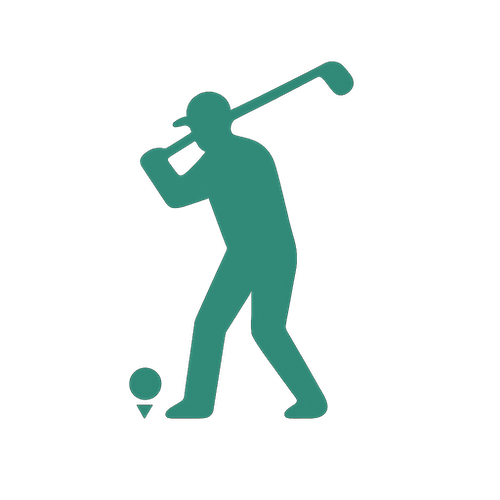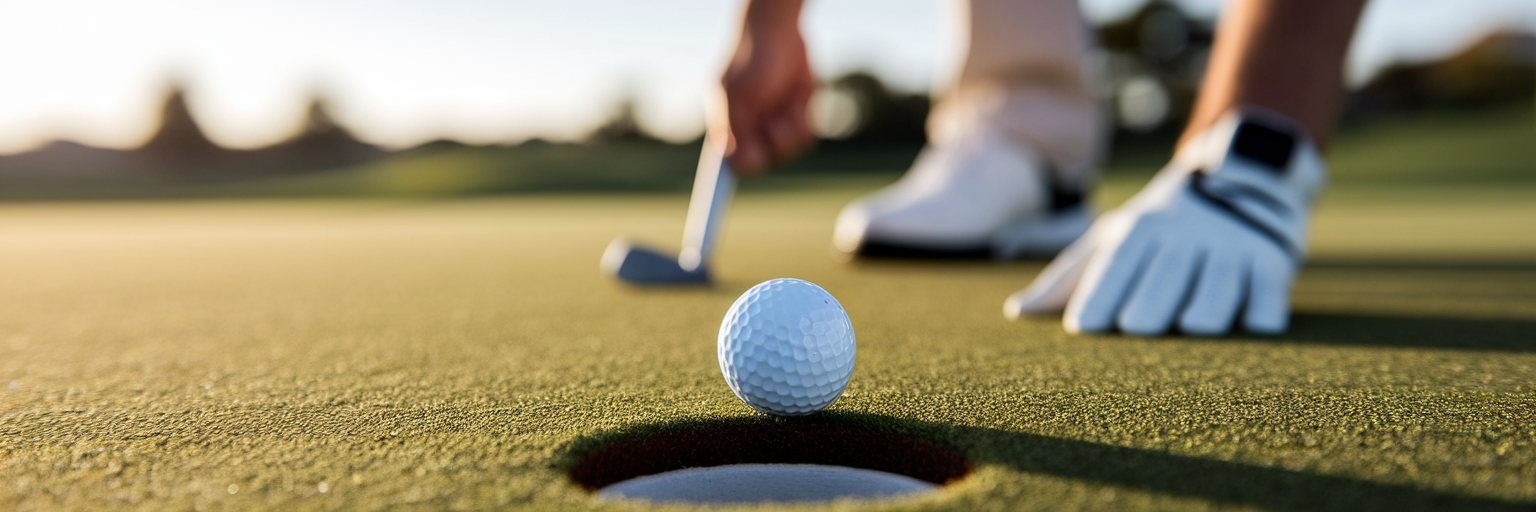How to Play Your First Round of Golf with Confidence
Stepping onto a golf course for the first time can feel like learning a new language and a new sport all at once. But the secret to enjoying your first round isn't about hitting a perfect shot. It's about feeling prepared. A little planning transforms anxiety into excitement, setting you up for a day of fun and learning. This guide will walk you through everything you need to know for how to play your first round of golf with a smile on your face.
Preparing for Your Day on the Course
A great day on the course begins long before you arrive at the first tee. Taking a few moments to prepare your gear and your mindset can make all the difference, ensuring you feel comfortable and ready to enjoy the experience.
Dressing for Success and Comfort
Golf has a traditional dress code, but it’s more about respect for the game and personal comfort than strict rules. For your first round, think neat and athletic. A collared shirt and non-denim trousers, shorts, or a skirt are standard. While golf shoes provide the best grip, a clean pair of athletic trainers will work just fine as you get started. The goal is to be able to move and swing freely for several hours.
Packing Your Bag with Essentials
Knowing what to bring for golf can seem complicated, but you only need a few key items. This simple checklist covers the essentials to get you through the day without any stress. Remember, it’s always better to have a little extra than to run out of something important mid-round.
| Item | Why You Need It | Beginner's Tip |
|---|---|---|
| Golf Balls | You will lose some, and it's part of the game. | Bring at least a dozen. It's better to have too many than not enough. |
| Tees | Used to prop up the ball for your first shot on each hole. | Pack a variety of heights; wooden tees are inexpensive and biodegradable. |
| Golf Glove | Improves grip and prevents blisters. | Wear it on your non-dominant hand (left hand for a right-handed player). |
| Ball Marker | To mark your ball's position on the green. | A coin or a dedicated flat marker works perfectly. |
| Water Bottle & Snack | To maintain energy and hydration over 4-5 hours. | Pack a banana or granola bar for a simple energy boost. |
Setting a Positive Mindset
With your bag packed, the final step is preparing your mind. See today not as a test of skill, but as a fun learning experience. Your goal is to enjoy the walk, the fresh air, and the company. Celebrate the good shots and laugh off the bad ones. This positive approach is a fundamental part of learning how to play golf.
Understanding the Golf Course Layout
A golf course can look like a huge, confusing green space, but every hole follows a similar pattern. Think of it as a path with a clear beginning, middle, and end. Understanding this basic geography will help you feel like you know where you're going, even on your first day.
The Anatomy of a Golf Hole
Each hole is a mini-journey with four main parts. You start at the Tee Box, a flat area where you take your first shot. Your goal is to hit the ball onto the Fairway, which is the short, manicured grass that looks like a perfect lawn. On either side of the fairway is the Rough, where the grass is longer and makes your next shot more difficult. Your final destination is the Green, an area of very short grass with the hole and flagstick.
Navigating Common Obstacles
Golf courses include challenges to make the game interesting. You will likely encounter bunkers, which are pits filled with sand, and water hazards like ponds or streams. Don't see them as punishments. They are just part of the puzzle. If you land in a bunker, use a club with a high loft, like a sand wedge, to help pop the ball up and out. To avoid water, simply aim for the safest, widest part of the fairway.
Choosing the Right Starting Point
At the tee box, you will see several different colored markers. These are not for decoration. They indicate different starting points to accommodate various skill levels. As a beginner, you should play from the most forward tees, which are often red or white. This is not a sign of weakness. It is a smart choice that makes the hole shorter and the game more manageable and fun.
Key Rules and Etiquette for a Smooth Round
Beyond hitting the ball, golf has a "social contract" that ensures everyone has a safe and enjoyable time. Following these basic golf rules for beginners and simple points of etiquette will help you fit right in and show respect for the game and your fellow players.
Maintaining the Pace of Play
One of the most important aspects of golf course etiquette for new players is keeping a good pace. This simply means being mindful of the group behind you and not causing delays. Be ready to hit when it’s your turn, walk directly to your ball, and if you think you’ve lost a ball, limit your search to just a minute. The USGA, which sets the standards for the game, emphasizes that a good pace is key to enjoyment for everyone. As noted in their official guidelines, playing golf involves proceeding in a timely manner.
Prioritizing Safety on the Course
This is the number one rule. Always be aware of your surroundings. Before you swing, make sure no one is standing close to you. Likewise, never stand in front of or directly beside someone who is hitting. If you hit a shot that veers toward other people, you must yell "Fore!" as loudly as you can. It is the universal warning signal in golf that a ball is heading their way.
Showing Respect for the Course and Players
A great golfer leaves the course in the same or better condition than they found it. This means practicing three simple habits. If your swing takes a chunk of grass out of the fairway (called a divot), replace it. After hitting out of a bunker, use the nearby rake to smooth out your footprints. Finally, on the green, be careful not to step on the imaginary line between another player's ball and the hole, known as their putting line.
A Simple Game Plan for Your First 18 Holes
You are on the course, you understand the rules, and now it is time to play. The best beginner golf tips focus on one thing: simplicity. Don't try to be perfect. Instead, use a straightforward strategy that reduces stress and keeps the game fun from the first hole to the last.
Simplifying Your Club Selection
A full golf bag has up to 14 clubs, which can be overwhelming. For your first round, you only need a few. Try a minimalist approach by sticking to four clubs: a hybrid or a high-lofted wood for tee shots, a 7-iron for most shots from the fairway, a pitching wedge for shots close to the green, and your putter. Using fewer clubs helps you build consistency and confidence.
Focusing on Fun, Not the Scorecard
Here is a secret: you do not have to keep score. The goal of your first round is to finish with a smile, not a low number. If you are struggling on a particular hole and getting frustrated, it is perfectly okay to pick up your ball and move on to the next tee. Give yourself permission to enjoy the process without the pressure of a scorecard.
Adopting a 'Safe and Steady' Shot Strategy
Forget trying to hit the ball as far as possible. Instead, aim for the widest, safest part of the fairway. Making a series of shorter, controlled shots that move you consistently forward is far more effective than one heroic attempt that lands you in trouble. This steady approach keeps the ball in play and builds momentum.
Putting with a Simple Goal
Once you reach the green, your new goal is to get the ball in the hole in two putts. Your first putt, known as a "lag putt," is not about making it in. It is about getting the ball close to the hole. Your second putt is then a simple tap-in. This two-putt strategy removes pressure and makes putting one of the most rewarding parts of the game.
Finishing Your Round and Planning Your Next
As you walk off the 18th green, the experience is not quite over. The way you conclude your round and reflect on the day sets the stage for your entire golf journey. It is a chance to celebrate your accomplishment and look forward to the next time you play.
The Traditional 18th Hole Finish
Golf ends with a simple, time-honored tradition that shows sportsmanship. At the end of the final hole, it is customary to remove your hat, look your playing partners in the eye, and shake their hands. A simple "thanks for the game" or "I had a great time" is the perfect way to close the day on a positive and respectful note.
Reflecting on Your Wins
It is easy to remember the shots that went into the woods or the putts that missed. Instead, make a conscious effort to focus on what went well. Did you hit one great drive? A solid iron shot that landed on the fairway? Or maybe you made a putt when you really wanted to. Hold onto those small victories. They are the building blocks of confidence.
Embracing the Learning Journey
Congratulations, you have completed your first round of golf. That is a huge accomplishment that every single golfer has had to go through. Remember that patience and a willingness to enjoy the process are the true keys to learning how to play golf. This is just the beginning, and we are here to guide you every step of the way as you continue to improve and, most importantly, have fun.






